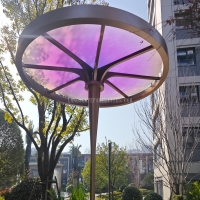Welcome to the website for landscape facilities products and knowledge.
How does the design accommodate temporary signage or instructions?
In dynamic environments like offices, retail spaces, or event venues, the need for temporary signage and instructional displays is common. Modern design addresses this challenge through several key strategies:
1. Modular Systems: Many contemporary designs incorporate modular panels or frames that allow for easy swapping of signs. Magnetic surfaces, clip-on mechanisms, or slot-in frames enable quick updates without damaging walls or structures.
2. Flexible Materials: Lightweight, durable materials like acrylic, foam board, or vinyl are often used for temporary signage. These can be easily printed, repositioned, or replaced as needs change.
3. Digital Integration: Screens and interactive displays provide adaptable solutions for temporary messaging. Content can be updated remotely, making them ideal for frequently changing instructions.
4. Standardized Placement: Designers often allocate specific zones for temporary signage—such as railings, freestanding kiosks, or designated wall areas—to maintain visual coherence while accommodating changes.
5. Color-Coding Systems: Some spaces use color-coded borders or backgrounds to distinguish temporary signs from permanent ones, ensuring clarity for users.
By prioritizing adaptability, designers create spaces that remain functional and organized even as informational needs evolve. This approach minimizes disruption while maintaining aesthetic integrity.
Related search:

Recommendation
Metal frame with gradient color acrylic combined with high-end shading landscape facilities